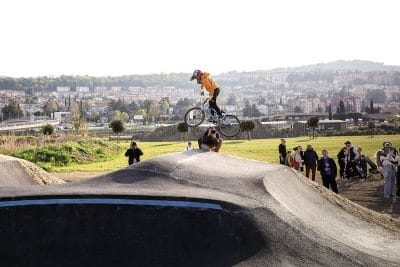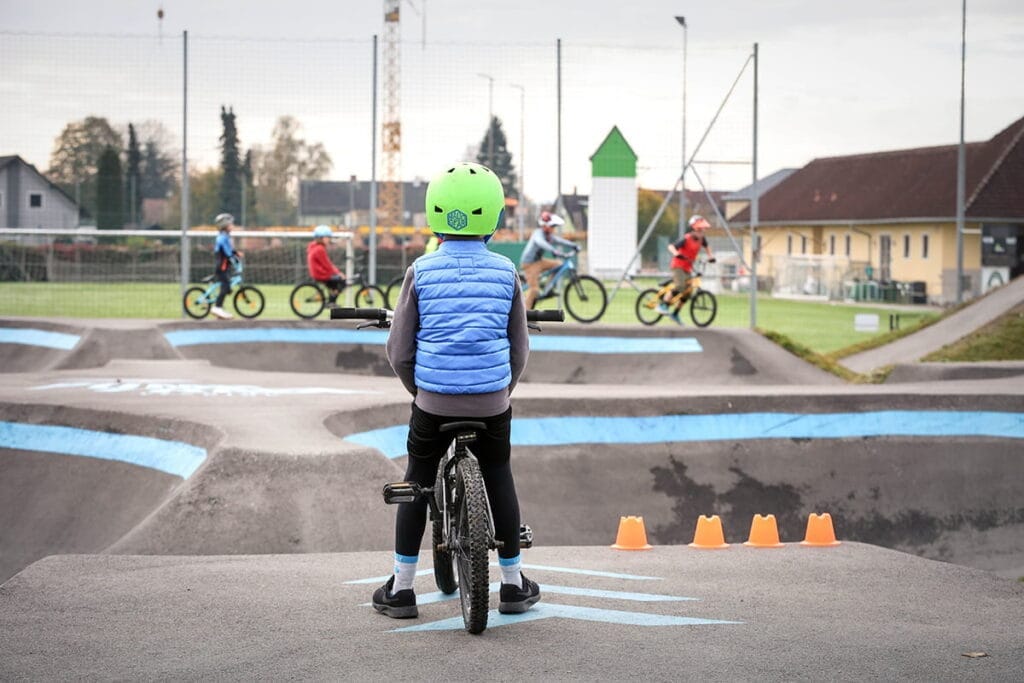
Let’s talk about safety
Safety is our top priority when it comes to the pump tracks. Our pump tracks are designed and built according to the highest safety standards and comply with relevant standards and guidelines. This attractive and inclusive sports playground consequently represents a safe environment where both the youngest users, as well as everyone else, can enjoy and develop their skills on almost any wheeled sports equipment.
We have written a lot about pump track safety in the past. Since bikes remain the most popular tool for riding on pump tracks, we have teamed up with Bike School Pekoll to further elevate the importance of safety. Bike School Pekoll is not only our partner in this year’s Austrian Pump Track Series, but they also stand behind a new blog series – Back to School. With their years of experience teaching kids (and adults) how to bike properly, they will be highlighting key safety topics, riding tips, and much more, starting with the proper and necessary gear to use.
First thing first – equipment
Biking has never been easier than on the pump track. Whether you are a complete beginner or preparing for the race of your life, the pump track will teach you how to do it better, faster, and safer. With a proper bike and helmet, you are ready to explore the world of pump track riding.
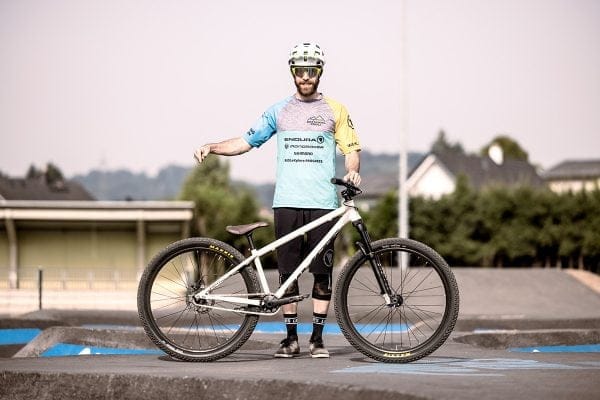
Which bike is the most suitable for a pump track?
Basically, almost any bike will work, whether it’s a balance bike, a BMX, a dirt bike, or a mountain bike. However, if you want to get as much as you can out of a pump track that has its own movement specifics, the best choice is a compact bike – just the right size to fit you – with little to no suspension elements. Most ambitious pump track riders use a BMX or 26-inch hardtail with a suspension fork and a well-functioning rear brake for speed control. The principle here is clear: “Less is more”
Bike School recommends:
- Hardtail or BMX (with or without suspension fork)
- 12-26 inch wheel size
- Low-profile tires to minimize rolling resistance
- Tire pressure of at least 3 bar – preferably close to the specified maximum pressure
- Make sure the saddle is almost completely recessed into the wheel for more freedom of movement
- Short stem
- At least one rear brake!

Watch your head!
Wearing a helmet while riding a bike is something that cannot be argued away these days, especially since they come in all sorts of shapes and colors. Whether it’s a bike helmet or a skate helmet, it’s important that it fits snugly on your head and does not fall off in the event of a fall. If you want to be even better protected when gravity kicks in, you should opt for a full-face helmet – one with a chin guard – to minimize the risk of injury to the face.
Bike School recommends:
- Check the helmet for damage before each ride!
- The helmet should sit horizontally on the head and cover both the forehead and the back of the head
- It should fit tightly enough so that it does not wobble when you shake your head
- Adjust the strap so that it does not slip over your chin or constrict your neck – as a rule of thumb, there should be room for a finger between the strap and your chin
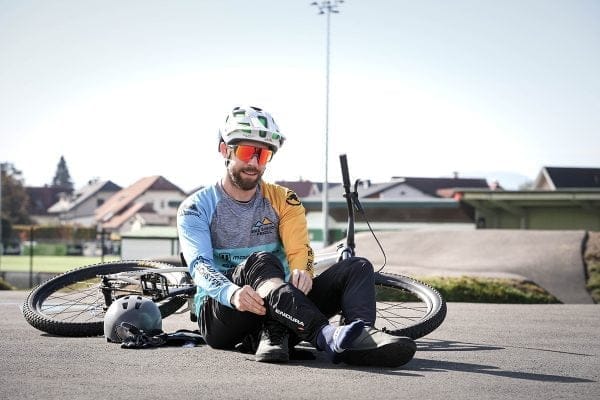
What else is there?
So that you do not immediately lose the joy of riding the pump track when gravity kicks in, it’s a good idea to also protect other contact points such as hands, knees, and elbows. Long-finger gloves protect the palms and fingers in the event of a touchdown and increase grip during sweaty sessions on the grips. Whether you use elbow and knee pads is up to you, depending on your comfort level. Our recommendation for your first steps on a pump track is clear: “The more protection, the better!” Of course, you can also use existing skate or inline skate protectors. If you want to play it safe, you can also strap on a back protector.
Bike School recommends:
- Thin long-finger gloves
- Soft, flexible bike protectors (they can also be worn under clothing and allow more freedom of movement)
- For all crank flippers and especially for those who want to be – put on shin guards
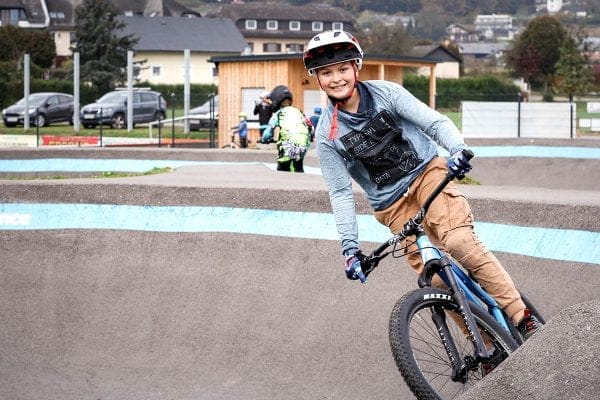
Play it safe
By taking safety precautions, you can ensure that everyone has a safe and fun time on pump tracks. So, make sure you do it safely. Look not only for properly functioning equipment and safety precautions but also for:
- Riding rules on a pump track – they are placed on the info board at each pump track entrance – please read them carefully.
- Stay at your level – do not rush, you have all the time in the world to become a pro if you are smart and train at your own pace.
- Respect others – it’s important to be considerate of other riders who may be faster or slower than you. Give them enough room so everyone can use a pump track at the same time.
- Have fun – that’s why pump tracks were built. Use them in a way that puts a smile on your face.
If you are looking for a safe and inclusive sports playground in your community, contact us. We’ll be happy to create a free concept for your new pump track.


